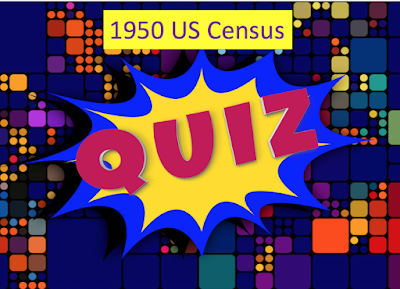With the public release of the 1950 U.S. Census coming soon on April 1, I'm figuring out where each ancestor lived in or around the year 1950 and then translating the street address into an Enumeration District, with the help of maps.
Why a map when there will be a surname index?
A rudimentary surname index will be available when NARA releases the 1950 US Census digitally on April 1st. Family Search and Ancestry and others are working to index the records, as well.
However, these initial indexes are unlikely to be complete or accurate, despite all the technology and attention they will represent.
So I'll want to identify the Enumeration District in which each ancestor lived. That will enable me to browse the ED records to locate my ancestors if they don't pop up in surname search results.
Great Aunt Jennie, the dressmaker
Today I'm mapping great aunt Jennie Katz Farkas (1886-1974), the husband of my maternal great uncle Alex Farkas (1885-1948)--he was my maternal grandma's older brother.
With Alex's death cert in hand, I know exactly where in New York City they were living in 1948. But as a widow, would Jennie be living in the same place?
I searched the 1949 directory for Manhattan, hoping to find Jennie on her own. There she was at the same address as in 1948 (see image at top). I was surprised but not flabbergasted to see her listed as Farkas, Jennie Mme.
All of my Farkas cousins know the story that Jennie was a peerless professional dressmaker with an expert eye for detail. She could study a high-fashion photo in Vogue and then recreate the dress on her own. She was renowned within the family for making beautiful gowns for her sisters-in-law when they married (and for bridesmaids and matrons of honor, as well).
I was aware she had a thriving business in dressmaking, but I didn't realize she called herself "Mademoiselle Jennie Farkas" for professional reasons. Um, she was born in Hungary! Still, she appears as Mme Jennie Farkas in Manhattan city directories throughout the 1940s. What an interesting detail to add to her story.
Mapping Jennie's Enumeration District
To map Jennie's ED, I went to the Unified 1950 Census ED Finder developed by Steve Morse and Joel Weintraub. If you haven't already bookmarked their page, add it to your list of key sites as you prep for the 1950 Census release!
I used the easy drop-down menus to enter Jennie's 1949 address (a proxy for her 1950 address), as shown on the image directly above. This was a busy, crowded Manhattan area, and I was careful to choose 80th Street West. (FYI: An address on the East would be in a different ED. This east/west situation is a factor in many cities and towns, as is north/south, so pay close attention to these details in your own searches.)
With only the street address entered, there would too many EDs to browse--see the listing at bottom of the above image. I needed to further narrow the number of EDs by selecting cross streets and back streets. On the ED Finder page, "See Google Map" is the place to click to see the map.
I clicked to view the map and found her address indicated by the red marker. It was easy to spot the three cross/back streets (I circled them above).
One by one, I entered the cross/back streets into the ED Finder with the convenient drop-down menus to guide me.
As the image below indicates, checking the map and having the four street boundaries surrounding Jennie's address allowed me to narrow down the number of EDs to only one: 31-803. That's the ED I'll browse on April 1st if Jennie doesn't show up using the surname index for the 1950 US Census.
"Maps" is this week's genealogy prompt in Amy Johnson Crow's yearlong #52Ancestors challenge.
Lisa Gorrell kindly sent a link to the NARA map for Jennie's ED, which is one of many hundreds of EDs in Manhattan. Jennie's ED is way at top left of the image at left.
Thanks, Lisa!
For more about the 1950 US Census and prepping for its release, please see my summary page here.




































